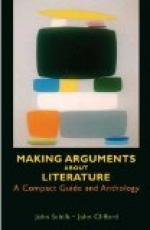No nonimmune resident was subjected to inoculation who had not passed in this camp the full period of incubation of yellow fever, with one exception, to be hereinafter mentioned.
For the purpose of experimentation subjects were selected as follows: From Tent No. 2, 2 nonimmunes, and from Tent No. 5, 3 nonimmunes. Later, 1 nonimmune in Tent No. 6 was also designated for inoculation.
It should be borne in mind that at the time when these inoculations were begun, there were only 12 nonimmune residents at Camp Lazear, and that 5 of those were selected for experiment, viz., 2 in Tent No. 2, and 3 in Tent No. 5. Of these we succeeded in infecting 4, viz., 1 in Tent No. 2. and 3 in Tent No. 5, each of whom developed an attack of yellow fever within the period of incubation of this disease. The one negative result, therefore, was in Case 2—Moran—inoculated with a mosquito on the fifteenth day after the insect had bitten a case of yellow-fever on the third day. Since this mosquito failed to infect Case 4, three days after it had bitten Moran, it follows that the result could not have been otherwise than negative in the latter case. We now know, as the result of our observations, that in the case of an insect kept at room temperature during the cool weather of November, fifteen or even eighteen days would, in all probability, be too short a time to render it capable of producing the disease.
As bearing upon the source of infection, we invite attention to the period of time during which the subjects had been kept under rigid quarantine, prior to successful inoculation, which was as follows: Case 1, fifteen days; Case 3, nine days; Case 4, nineteen days; Case 5, twenty-one days. We further desire to emphasize the fact that this epidemic of yellow fever, which affected 33.33 per cent of the nonimmune residents of Camp Lazear, did not concern the seven nonimmunes occupying Tents Nos, 1, 4, 6 and 7, but was strictly limited to those individuals who had been bitten by contaminated mosquitoes.
Nothing could point more forcibly to the source of this infection than the order of the occurrence of events at this camp. The precision with which the infection of the individual followed the bite of the mosquito left nothing to be desired in order to fulfill the requirements of a scientific experiment.
In summing up their results at the conclusion of this report the following statement is made:
Out of a total or eighteen nonimmunes whom we have inoculated with contaminated mosquitoes, since we began this line of investigation, eight, or 44.4 per cent, have contracted yellow fever. If we exclude those individuals bitten by mosquitoes that had been kept less than twelve days after contamination, and which were therefore probably incapable of conveying the disease, we have to record eight positive and two negative results—80 per cent.
In a still later report (May, 1901) Dr. Reed says, “We have thus far succeeded in conveying yellow fever to twelve individuals by means of the bites of contaminated mosquitoes.”




